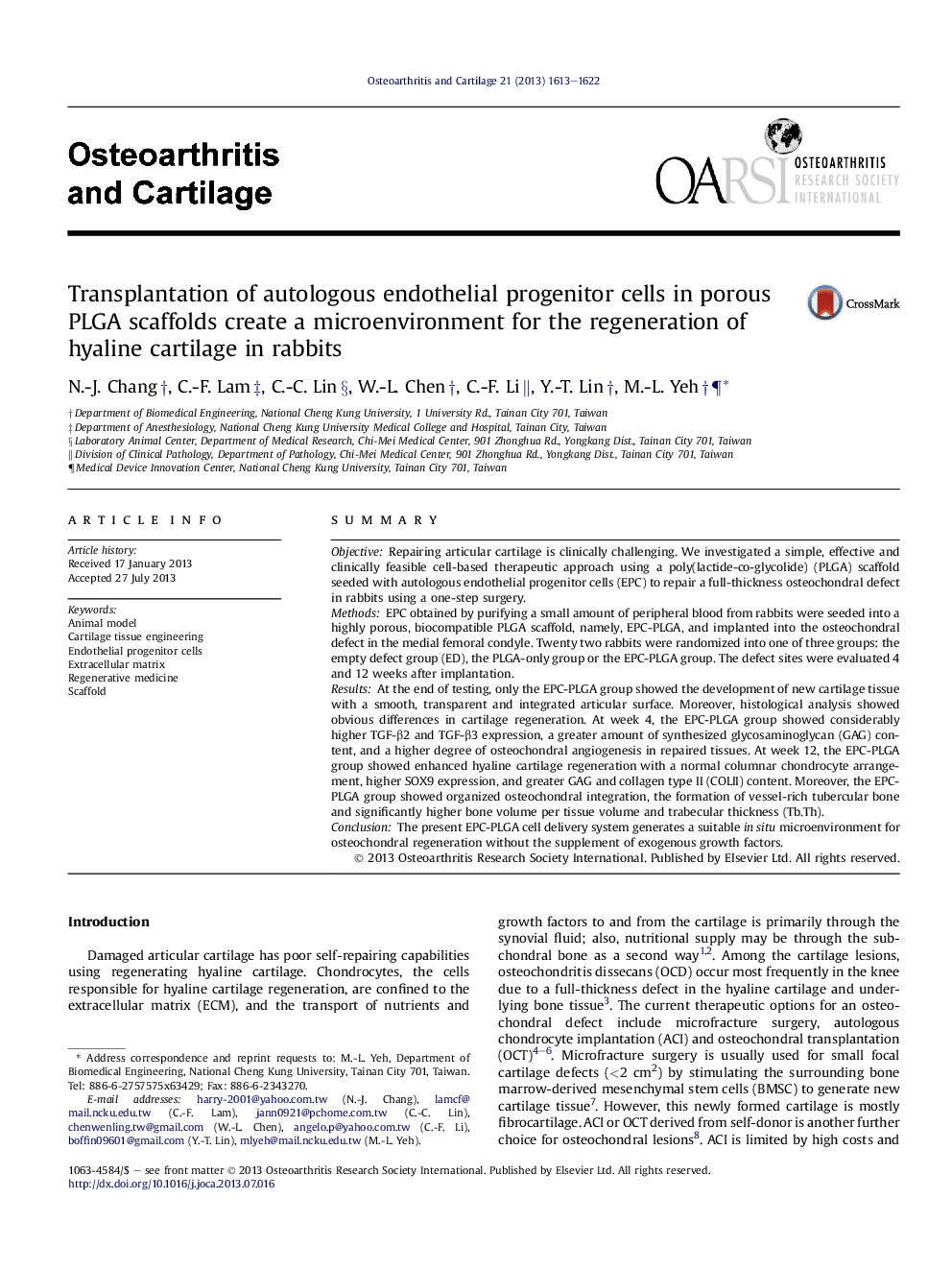| Article ID | Journal | Published Year | Pages | File Type |
|---|---|---|---|---|
| 3379666 | Osteoarthritis and Cartilage | 2013 | 10 Pages |
SummaryObjectiveRepairing articular cartilage is clinically challenging. We investigated a simple, effective and clinically feasible cell-based therapeutic approach using a poly(lactide-co-glycolide) (PLGA) scaffold seeded with autologous endothelial progenitor cells (EPC) to repair a full-thickness osteochondral defect in rabbits using a one-step surgery.MethodsEPC obtained by purifying a small amount of peripheral blood from rabbits were seeded into a highly porous, biocompatible PLGA scaffold, namely, EPC-PLGA, and implanted into the osteochondral defect in the medial femoral condyle. Twenty two rabbits were randomized into one of three groups: the empty defect group (ED), the PLGA-only group or the EPC-PLGA group. The defect sites were evaluated 4 and 12 weeks after implantation.ResultsAt the end of testing, only the EPC-PLGA group showed the development of new cartilage tissue with a smooth, transparent and integrated articular surface. Moreover, histological analysis showed obvious differences in cartilage regeneration. At week 4, the EPC-PLGA group showed considerably higher TGF-β2 and TGF-β3 expression, a greater amount of synthesized glycosaminoglycan (GAG) content, and a higher degree of osteochondral angiogenesis in repaired tissues. At week 12, the EPC-PLGA group showed enhanced hyaline cartilage regeneration with a normal columnar chondrocyte arrangement, higher SOX9 expression, and greater GAG and collagen type II (COLII) content. Moreover, the EPC-PLGA group showed organized osteochondral integration, the formation of vessel-rich tubercular bone and significantly higher bone volume per tissue volume and trabecular thickness (Tb.Th).ConclusionThe present EPC-PLGA cell delivery system generates a suitable in situ microenvironment for osteochondral regeneration without the supplement of exogenous growth factors.
